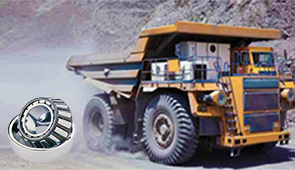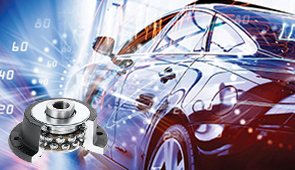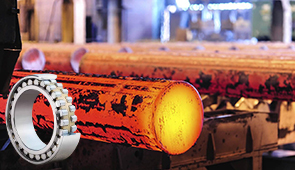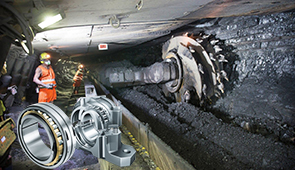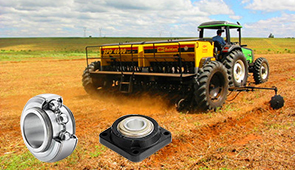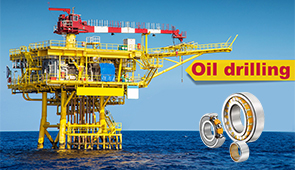Sleeve Bearing vs Ball Bearing: Which Type is Right for Your Cooling Fan?
When selecting a cooling fan for your application, the choice of bearing system is a critical factor that can significantly impact the fan’s performance, lifespan, and overall suitability for specific operating conditions. Two of the most commonly used bearing types in cooling fans are sleeve bearings and ball bearings, each with distinct characteristics, advantages, and limitations. Understanding the differences between these two bearing systems is essential to making an informed decision that aligns with your requirements, whether it’s for an industrial setup, electronics cooling, or other demanding environments. This article provides a comprehensive analysis of sleeve bearings and ball bearings, examining their operating mechanisms, durability, maintenance needs, and ideal applications to help you determine which option is best suited for your cooling fan needs.
What is a sleeve bearing, and how does it work?
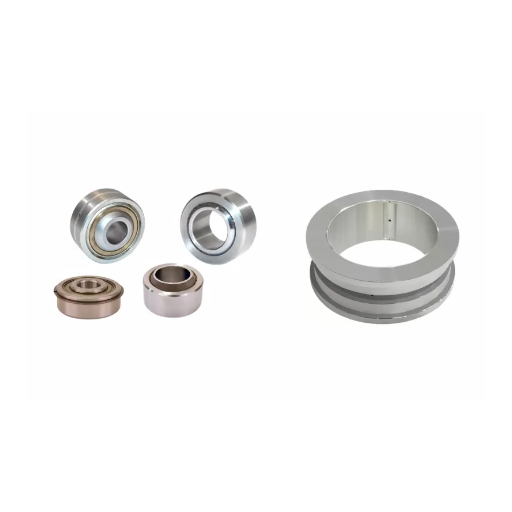
Understanding the cylindrical sleeve design
A sleeve bearing, also known as a plain bearing, operates on the principle of sliding motion between surfaces. The “cylindrical sleeve design” typically consists of a hollow shaft that encases the fan’s rotating shaft. The sleeve is crafted from low-friction materials, such as sintered bronze or polymer composites, which reduce wear during operation. Lubrication, often an oil or grease film, is critical for minimizing friction and extending the lifespan of the bearing.
- Friction Coefficient: Typically low (0.1 to 0.3 with lubrication) to ensure smooth operation and moderate power loss.
- Maximum Operating Temperature: Commonly between -20°C and 100°C, though this varies depending on the lubrication and material used.
- Load Capacity: Typically ranges between 5N to 50N for small cooling fans, depending on the application.
- Rotational Speed (RPM): Generally suitable for lower RPM applications (below 3,000 RPM) to maintain optimal performance without excessive wear.
- Lifespan: Estimated between 30,000 to 40,000 hours in moderate conditions, heavily influenced by lubrication and environmental factors.
The cylindrical sleeve design is straightforward and cost-effective, making it highly suited for applications where low noise, simplicity, and short to medium lifespans are acceptable. However, this type of bearing requires regular maintenance, particularly in high-temperature or high-dust environments, to prevent degradation of the lubrication layer.
Role of lubrication in sleeve bearings
The working capacity of sleeve bearings highly depends on lubrication, which facilitates performance for friction depending on the rotation of the shaft against the bearing and also helps in heat reduction. Lubrication minimizes metal-to-metal contact through the thin layer formed by moving parts of the system. The selection of lubricants is dependent on the working conditions of the oil, such as load, surrounding temperature, and other climatic conditions.
- Lubrication Viscosity: The lubricating oil’s viscosity, along with the oil’s operating temperature and speed, should match the application requirements precisely. For low-speed operations, higher-viscosity lubricants are recommended. Lower viscous oils are, however, necessary for high-speed applications in order to sustain low drag.
- Lubrication Load Capacity: Oil (lubricant) must satisfy the breakdown criteria with particular load operational conditions. High-load applications are particularly relevant because of the containment of sufficient oil film thickness under logically inferrable pressure.
- Lubricating Temperature Range: Considerable reliable performance parameter range illustrated by insufficient heating of -20F, through existence to, 250F (-29C and,121C) for general use.
- Lubricant Contaminant Resistance: Grease with particulate trapping or suspending characteristics improves the ability of the lubricant while lubrication contaminated/washed bearings in unclean and dusty environments where superior sealing self-cleaning lubricants are necessary.
- Lubrication Interval: The maintenance intervals should be in harmony with the anticipated life of the lubricant, which can range anywhere from several hundred to thousands of operational hours, depending upon the use conditions.
To achieve efficiency and prevent premature bearing failure, proper monitoring and replenishment of lubrication are essential.
Common applications for sleeve bearings
The significant presence of sleeve bearings in various industries stems from their ease of use, resiliency, and affordability. Sleeve bearings are customarily used in:
- Electric Motors: Incorporated in small to medium-sized motors because of their inherent noiselessness and their capabilities to withstand somewhat high amounts of load.
- Automotive Systems: Integrated into various parts of steering systems, transmissions, and pumps, where dependable functionality and performance is crucial.
- HVAC Systems: Mostly implemented in blowers and fans where low-attention design enables prolonged constant operation.
- Industrial Equipment: Used in conveyor systems, turbines, and machines for handling of materials because of their capacity to withstand enormous weight and rough conditions.
These uses derive particular benefits from sleeve bearings, their wear resistance and adaptability to different types of lubricants being the foremost. It is, however,r equally important to align the bearing’s specifications with such technical requirements as load and speed, as well as lubrication measures returning to performance and durability optimization.
How does a ball bearing function in a cooling fan?
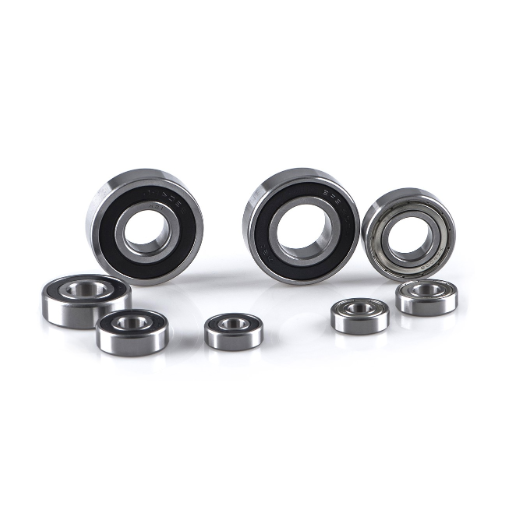
Explaining the ball-bearing mechanism
Ball bearings help a cooling fan by preventing friction as well as helping in bearing radial and axial loads due to the rotation of the fan blades. Tiny steel spheres are kept between two circled parts, inner and outer races, which form the foundation of the mechanism. These balls move within and are contained in a highly polished channel that has the lower portion radial and provides restraining pressure, reducing contact area and, thus, minimizing resistance.
- Load bearing: Ball bearings are constructed to support the simultaneous application of radial and axial forces with efficiency. The load should neither be less nor more than the given allowance to avoid unnecessary tear and damage to the parts over time.
- Rotational speed: The fan’s rated maximum RPM (revolutions per minute) efficiency is to reduce overheating and allow the bearing to work without problems.
- Lubrication type: The most effective way to avoid damage is proper lubrication with oil or grease, and avoid unnecessary breakdowns. The type of lubricant depends on the working temperature of the fan.
- Temperature limits: The bearings need to withstand the cooling fan’s range of thermal operation over extended periods.
With all specifications taken care of, the ball-bearing mechanism is certain to perform its best in all cooling fan set-ups.
Benefits of ball bearings in cooling solutions
When incorporated into the cooling fan applications, ball bearings offer several advantages relating to their performance and reliability, such as:
- Friction Reduction: Ball bearings greatly minimize moving parts friction due to their precision design, improving overall energy use while also helping reduce heat output.
- Increased Lifespan: Ball bearings can endure considerable mechanical stress and wear, which helps guarantee operation in difficult conditions over time. For example, good quality bearings outperform 50,000 hours of lifespan with ease in controlled environments.
- Temp Tolerance: These bearings operate from -30ºC to 150ºC, which is considered very broad, enabling them to be used in very high or low thermal cases without impacting performance.
- Rotational Speed: Compared to sleeve bearings, ball bearings allow faster rotational speeds without sacrificing efficiency. A majority can sustain speeds greater than 10,000 RPM, aiding in improved airflow in cooling systems.
- Maintenance-Friendly: With appropriate sealing and lubrication, a majority of ball bearings perform well with little to no maintenance. This is perfect for setups requiring continuous operation 24/7.
The utilization of ball bearings enables reduced operational costs, increased reliability in cooling solutions, and improved thermal management.
What are the differences between sleeve bearings and ball bearings?

Friction and noise level comparison
Ball bearings have lower friction levels compared to sleeve bearings because their rolling motion has much less contact surface area. The friction coefficient value for ball bearings lies between 0.001 and 0.005; this value varies with design quality and the lubrication of the bearing. The reduction of this friction improves the efficiency and energy used in other systems.
On the other hand, sleeve bearings have a sliding motion with an open shaft working on the bearing surface. This results in direct contact, leading to a shaft friction coefficient of about 0.01, which can go up to 0.1 depending on the material and lubrication. This, combined with the supplementary energy breakdown, leads to high heat generation, resulting in the need for additional cooling measures for high-speed operations.
About noise, ball bearings are likely to produce more sound than sleeve bearings because the rolling elements cause vibration when in motion and even more noise at increased speed. However, well-designed ball bearings with economically preloaded and good quality parts can lessen this noise. As long as there is lubricating oil and a proper amount of clearance to permit a smooth and undisturbed sliding motion of the shaft, sleeve bearings of simpler construction will achieve low-noise operation.
These differences in friction and noise make for efficiency in high-speed applications with ball bearings, while sleeve bearings perform better in low-noise environments.
Cost implications of each type of bearing
The design, materials, and intended use of ball bearings and sleeve bearings dictate their costs. Because of their complicated construction that includes rolling elements, raceways, and cages, ball bearings involve higher initial costs that stem from requiring advanced manufacturing processes. However, this expense is warranted for high-speed situations that require extensive rotational energy efficiency, which ball bearings are optimized to handle. For instance, ball bearings often have an operating speed range of up to 300,000 dN (diameter in mm ✕ RPM), which makes them ideal for high-speed environments.
However, sleeve bearings have lower manufacturing and maintenance costs, which stems from their simplistic design. Consisting of a cylindrical sleeve and a lubricating system, sleeve bearings can only reach operational speeds close to 100,000 dN. They shine in situations where low costs and noise are required, such as in HVAC systems and low-speed motors. Furthermore, the lower mechanical complexity often leads to reduced downtime and maintenance costs throughout the sleeve bearing’s operational life.
Trade-offs concerning cost also relate to the service life of the product. Under ideal load conditions and proper maintenance, ball bearings can achieve up to 50,000 hours of service life with regular re-lubrication. Sleeve bearings may not last as long in higher-speed applications, but they are more cost-effective in lower-speed applications, where their lifespan meets specifications without excessive over-engineering.
To conclude, the selection for one type over the other ball bearings or sleeve bearings is primarily dependent on the trade-off of the initial capital expenditure, the expenditure on maintenance throughout the lifecycle, and the technological performance features of the system. In most cases of high-speed and high-efficiency usage, the additional cost for ball bearings is justified. In contrast, sleeve bearings provide economical alternatives in operations that are low speed, low noise, and noncritical.
When should you choose a sleeve bearing fan?

Advantages of sleeve bearings for low-speed applications
The use of sleeve bearings in low-speed applications can be beneficial because of their cost and simplicity. They function well in scenarios with operational speeds below 2000 RPM. Any further increase in speed would be likely to shorten the lifespan because of friction and wear. In addition, sleeve bearings have lower vibration, which provides ease while meeting low noise requirements.
- Cost effectiveness: Sleeve bearings have lower manufacturing and replacement costs compared to ball bearings, which allows them to be a better-suited option for operations with budget constraints.
- Operational range: Best performance is achieved at speeds lower than 2000 RPM, which provides durability in less strenuous conditions.
- Noise and vibration: Since noise emissions are reduced due to the sliding contact mechanism, sleeve bearings are ideal for quiet environments.
- Maintenance requirements: Relatively little maintenance is required aside from adequate lubrication, which allows increased usability for non-critical applications.
This combination makes them an attractive option where performance at higher speeds and efficiencies is not a priority.
Disadvantages of sleeve bearings in high-temperature settings
- Degradation of Lubricant: Elevated temperatures lead to more rapid degradation of lubricants and a subsequent increase in friction and wear. For example, mineral-based oils often break down beyond 150 degrees centigrade, whereas synthetic oils may be tolerant up to 250 degrees centigrade or greater, depending on composition.
- Thermal Expansion: The Composition materials in sleeve bearings, bronze, babbitt, and composite materials undergo some degree of thermal expansion. While this is normal and expected, excessive expansion can lead to proportionate increases in clearance levels, which in turn causes interference or misalignment during the operation of the device.
- Reduced Load Capacity: The Strength of most bearing materials increases with temperature, especially babbitt. Unfortunately, babbitt’s load carrying capacity (strength) also diminishes with heat, in other words above 120 degrees centigrade, this makes the bearing unsuitable for heavy duty or high load applications during such conditions.
- Oxidation of Bearing Surfaces: Continous high temperatures often lead to oxidation, primarily for metal-based bearings, meaning added surface damage along with reduced lifespan.
- Lubrication Challenges: Meeting the requirement for delivery of lubrication at higher temperatures is a challenging proposition because traditional methods or grease compositions may not function efficiently, resulting in dry running and thus accelerating wear and tear.
When sleeve bearings have to be applied in locations with extreme thermal environments, high-temperature-specific lubricants, along with proper material selection, are critical in lessening these impacts.
How sleeve bearings may affect fan service life
In terms of sleeve bearings, with their specific characteristics in mind, it can be stated that they can have a remarkable impact on a fan’s service life. Accordingly, adequate lubrication is also fundamental since lubricant reduces friction and wearing of the bearing constituents. However, when lubricants are used in high-temperature zones, choices become quite important. It is essential to ensure proper lubrication with high-temperature lubricants that are designed to withstand thermal degradation. Failure to maintain these could result in increased friction, dry running, and accelerated wear.
- Operating Temperature Range: As with any bearing, sleeve bearings should work proficiently within the operating temperature of the fan, which is usually from -20°C to 100°C for normal usage or up to 250°C in high temperatures.
- Load Capacity: The materials used as the bearing and its lubricant as well should sustain the load imposed by the fan(usually measured in pounds or newtons) without traceable indentation or rupture.
- Lubricant Viscosity Index (VI): A lubricant with a high VI will provide strength efficiency, as a VI higher than 150 is commonly accepted for high-performance configurations.
When these factors are taken care of and sufficient servicing is provided, sleeve bearings are able to provide uninterrupted performance of the fan for a longer period while prolonging the service life of the assembly.
What are the pros and cons of using ball bearings and sleeve bearings in fan technology?
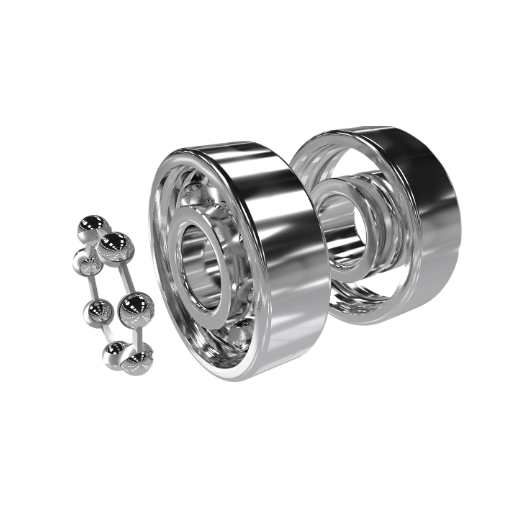
Why ball bearings offer better durability
Ball bearings promise increased durability because they sustain lesser friction and have superior load-handling abilities. Unlike sleeve bearings, which need a thin film of lubrication to decrease friction, ball bearings use rolling elements that cut down the contact area to two-dimensional space, thus reducing wear and tear. This enables higher rotation speeds and greater axial and radial loads to be endured. Generally speaking, ball bearings can bear axial loads of up to 50% of their radial load, which helps the bearings in several applications that require endurance and reliability.
- Friction Coefficient: Like any other ball bearings, the friction coefficient is lower than that of sleeve bearings (which is usually between 0.001 and 0.005). Therefore ensuring efficient operations over long durations.
- Load Capacity: Depending on the material used for the ice construction of the bearings, the radial load capacities are between 10 N/mm² and 50 N/mm², thus enabling them to take MST stress.
- Speed Tolerance: Singular design enables ball bearings to withstand higher RPM (Revolutions Per Minute) of 5,000 and sometimes double.
- Temperature Range: Depending on lubrication, ball bearings operate in a wide range of -30 degrees Celsius to +150 degrees without any loss of efficiency.
Using ball bearings in a machine will increase its durability compared to using sleeve bearings because the ball bearings’ enhanced features make the machine able to withstand high workloads and faster operating speeds.
Understanding the higher cost of ball bearings
Ball bearings cost a lot of money due to their intricate designs, use of materials, and methods of production. They are made of chrome steel, stainless steel, or ceramic components, which are highly durable and perform exceptionally well under extreme conditions. In addition, the production process requires tight tolerances as well as smooth surface finishes, which increases costs.
In terms of technical parameters, these have been recently designed to cater to exceptional operating speeds that can go as high as 5,000 RPM and can sustain radial as well as axial loads with ease. Complete with improved lubrication systems, these features provide wide performance across different temperatures of -30 degrees Celsius to 150 degrees Celsius. With proper care, the meticulously designed tools will outlast their counterparts, minimizing maintenance costs.
All in all, ball bearings are a smarter economic investment for long-term applications because their elevated costs are justified by their enriched reliability, energy efficiency, and capability of functioning under extreme conditions.
Frequently Asked Questions (FAQs)
Q: What are the main differences between sleeve bearings and ball bearings in cooling fans?
A: Sleeve bearings, also known as plain bearings, are typically quieter and more cost-effective, whereas ball bearings can carry heavier loads and have a longer lifespan. Ball bearing fans are suitable for high-performance applications and can operate in any orientation, including axial fans.
Q: How does the life span of sleeve bearings compare to that of ball bearings?
A: Sleeve bearings generally have a shorter lifespan compared to ball bearings. Ball bearings tend to last longer due to their ability to handle higher loads and reduce friction within the bearing.
Q: Are sleeve bearings quieter than ball bearings?
A: Yes, sleeve bearings are generally quieter than ball bearings. This is because sleeve bearings have a smaller contact area between the shaft and the bearing, which reduces noise during operation.
Q: When should I choose ball bearings over sleeve bearings for my cooling fan?
A: You should choose ball bearings if your application requires a fan that operates in high-temperature environments, has a longer life span, or needs to be mounted in different orientations. Ball bearings can carry heavier loads and are suitable for more demanding applications.
Q: Can sleeve bearings be used in all types of fans?
A: Sleeve bearings can be used in many types of fans, but they are best suited for low-to-moderate-speed applications where noise reduction is a priority. They are less ideal for high-performance fans that require greater durability and load capacity.
Q: What is a fluid dynamic bearing, and how does it compare to sleeve and ball bearings?
A: A fluid dynamic bearing is a type of bearing that uses a thin layer of fluid within the bearing to reduce friction and wear. It offers a balance between the quiet operation of sleeve bearings and the long life span of ball bearings, making it an excellent choice for improving fan performance.
Q: How does fan mounting orientation affect the choice of bearing type for your cooling fan?
A: Fan mounting orientation can significantly affect the choice of bearing. Sleeve bearings are more sensitive to orientation and may wear out faster if not mounted horizontally. Ball bearings are more versatile and can operate efficiently regardless of the fan’s mounting position.
Q: What are the benefits of using sleeve bearings in cooling fans?
A: Sleeve bearings are a cost-effective solution for applications where low noise and moderate speed are priorities. They are also simpler in design, which makes them easier to manufacture and maintain.
Q: What type of fan bearing should I use for high-speed applications?
A: For high-speed applications, ball bearings are recommended due to their ability to handle higher rotational speeds and greater loads. They provide better fan performance and have a longer life span compared to sleeve bearings.
UCTH213-40J-300 with Setscrew(inch)
CNSORDERNO: Normal-duty(2)
TOGN: UCTH213-40J-300
SDI: B-R1/8
SD: 2 1/2
UCTH212-39J-300 with Setscrew(inch)
CNSORDERNO: Normal-duty(2)
TOGN: UCTH212-39J-300
SDI: B-R1/8
SD: 2 7/16
UCTH212-38J-300 with Setscrew(inch)
CNSORDERNO: Normal-duty(2)
TOGN: UCTH212-38J-300
SDI: B-R1/8
SD: 2 3/8
UCTH212-36J-300 with Setscrew(inch)
CNSORDERNO: Normal-duty(2)
TOGN: UCTH212-36J-300
SDI: B-R1/8
SD: 2 1/4
UCTH211-35J-300 with Setscrew(inch)
CNSORDERNO: Normal-duty(2)
TOGN: UCTH211-35J-300
SDI: B-R1/8
SD: 2 3/16
UCTH211-34J-300 with Setscrew(inch)
CNSORDERNO: Normal-duty(2)
TOGN: UCTH211-34J-300
SDI: B-R1/8
SD: 2 1/8









